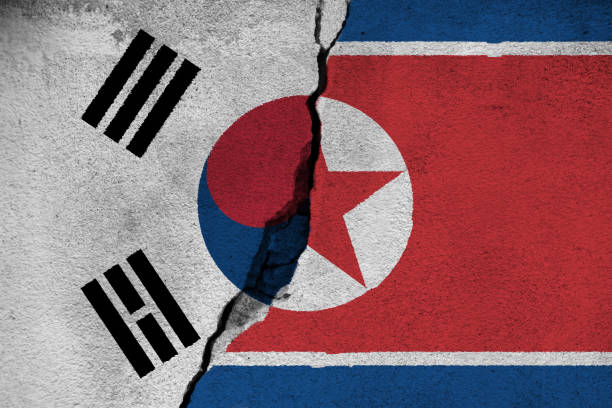
Tensions between North and South Korea are no news, after all the new countries are technically “at war”. However, in recent months we have witnessed an escalation of military, specifically nuclear tensions between the two Koreas, which represents a break from the welcomed inter-state agreement signed in 2018. Under the Comprehensive Military Agreement (CMA), both countries committed to “completely cease all hostile acts against each other”, in an attempt to address the sources of military tensions. At the same time the deal sought to implement confidence-building measures in the land and sea. The measures included prohibition of military drills near the border and the establishment of no-fly zones.
Nonetheless, recently North Korea declared its intent to strengthen its armed forces and deploy new weaponry along the border with South Korea. Similarly, South Korea also suspended part of the agreement and resumed frontline aerial surveillance of North Korea, in response to North Korea’s spy satellite launch. To this, North Korea responded asserting that its army “will never be bound” by the agreement and pledging to reinstate all military measures halted under the 2018 deal. Even more worrisome is the escalation of nuclear tensions between the two countries. South Korea deepened nuclear cooperation with the United States and Japan. Specifically, the US and South Korea announced their cooperation on the planning for the use of nuclear weapons. At the same time, President Biden threatened to put an end to the regime in North Korea, was it to use nuclear weapons. As expected Kim Jong Un did not welcome this development. As a response, North Korea carried out more than 40 missile tests, it also passed a law making nuclear-armed status irreversible, thus prohibiting talks on denuclearisation and even more worryingly, allowing for pre-emptive use of nuclear weapons.
The growing nuclear tensions between Pyongyang, Washington, and Seoul are yet another example of the erosion of the longstanding nuclear taboo. Another example would be Russia’s explicit nuclear threats during its invasion of Ukraine. Arguably, it goes to show that deterrence by nuclearization and threats of it often have the opposite result of escalating tensions. This is especially so considering how quick countries are to rely on the national security rhetoric, even when they publicly support nuclear disarmament; such reliance on nuclear weapons in response to any real or perceived foreign threats, as witnessed with South and North Korea, often results in escalated international tensions. The support given by the US to South Korean and that given by China to North Korea adds an extra layer to the current situation. Whilst the US has publicly supported South Korea against threats coming from North Korea, China has been quietly enabling North Korea to circumvent some limits imposed by sanctions and providing it an economic lifeline.
Between January and May 2023, North Korea’s commercial fleet expanded by 14 ships, as reported by the UN panel tasked with monitoring compliance with the sanctions imposed on the country. Majority of these ships came from China, which remains its primary economic partner. In fact, most of these ships return to China loaded with North Korean goods. Many also return to Korea with not only essential goods, but also sanctioned good, such as luxury cars, and goods like oil in exceeding quantities than those permitted under the sanctions. Despite the evidence proving China is allowing North Korea to break the limits imposed by sanctions, it continues to deny it and to claim to be “fully and strictly implementing” the sanctions. Another alliance, which always more seem to follow from one with China, is that with Russia. North Korea has been accused of sending a thousand containers of weapons to Russia to its war in Ukraine, which again North Korea is banned from doing under the sanctions regime.
From what discussed so far, it emerges that the current tensions between North and South Korea follow an always more prominent pattern in international politics. It seems to be another case of regional historical tensions becoming a wider affair involving rival superpowers, the US on one side and China on the other. The U.S.-China rivalry has created a complex backdrop for regional conflicts, with both nations vying for influence in strategically important areas and trying to push forward their preferred world-order. We are witnessing the same in many other regional conflict, most relevantly the Israel-Hamas one. On the one hand involvement of these superpowers in regional conflicts is inevitable and often called for, see public pressure for US involvement in Ukraine in order to protect “democratic values”. On the other hand, they risk starting a wider conflict, which they are stuck fighting without any concrete gain. The South-North Korean conflict could be an example of that. The US alliance with South Korean and its talks of plans for potential employment of nuclear weapons has had the result of reviving North-Korea’s nuclear plan and strengthening its ties with China and, potentially, Russia.
By The European Institute for International Law and International Relations















